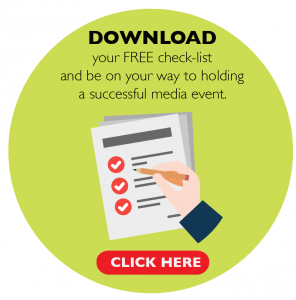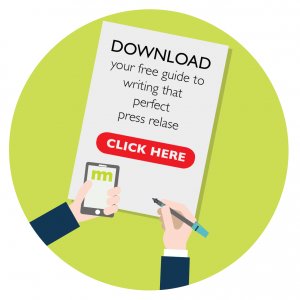So, you’ve got a great product or service. You’ve tried and tested your amazing idea and you’re sure it’s going to solve a big problem in people’s lives. All you need to do is get the word out there and before you know it, hoards of people will soon be using it and sharing it with their friends.
Right?
Quite often here at Mutant, we see a pattern of pre-launch startups approaching us for PR, social and content activities a month (or even less) before their big launch. While it’s great our services are being sought out, it’s not ideal for startups – or for a PR campaign – to have such a short lead-in time. It’s something that you should be thinking about months in advance to plan your content, generate interest and kick-start press coverage.
Magazines work two months in advance, so if you’re hoping for print interviews and features, you need to be working to their timings.
These days there are more activities than ever for startups to think about. PR, social media, video content, blogs, marketing, SEO, SEM – the list goes on. This can be really overwhelming for a small team with a limited budget. All these activities will help you in different ways, but applying a small combination of them – or placing a large focus on one or two from the list – will help you go a long way.
For the purpose of this post we’ll focus solely on PR, going through the tasks and stages you should be thinking about before engaging an agency for help to execute.
- Writing a press release: What’s your angle?
Finding the right angle for your initial press release is the most important starting point. What do you want to highlight to the media and the public the very first time they hear about your business?
Ideally it’s your USP – your Unique Selling Proposition – which could be anything from innovation around great service, famous founders, game-changing food or venue, the solution to an industry-wide problem, the biggest, fastest, strongest product in its field, etc.
There are so many things you probably want to say, but you only have one shot to grab attention with a catchy angle and main headline. Make sure it really stands out.
- Press release tips to keep in mind
- Make sure your news is timely – it has to be about now. Include dates and timings if applicable in your release.
- Write all the main points in your first two sentences. Some journalists and bloggers might not read beyond this. Include the What, When, Where, Why and How of your story.
- Make sure your release includes one or two quotes from key people, such as a company founder or an expert in the field. Make it easy for the press to extract a succinct quote that outlines the purpose of your launch.
- Add in contact details for further enquiries or interview requests.
- Put in a link to your press kit at the end.
- Putting together a press kit
By using something as simple as Dropbox, put together a folder of all the information the press may need to access about you. This can include biographies of key people, your company profile, high resolution photos, videos (if applicable), FAQs and, of course, your press release.
This way, media have all the information they need to write about you, making it much more probable that they will cover you. No one likes to go back and forth while collating an article.
- Pitch the right story to the right journalists
This is the most important step of all. There is no point pitching a tech story to a fashion magazine or a lifestyle angle to a business journalist.
Your business is likely to appeal to different sectors and industries. Alongside your PR agency, this can help you segment what aspects of your company will appeal to different journalists. For example, if you’ve created a lifestyle app that reviews restaurants, you would want to pitch your story to F&B magazines and lifestyle sections of daily newspapers.
But let’s take it one step further. If you’re willing to divulge figures, why not approach tech and business publications to announce your Series A funding? If you’ve got an interesting personal story, why not approach women’s and men’s magazines for a profile interview? If you’re not sure about the best way to do this, an agency can help streamline this process to ensure maximum coverage.
- Follow up
Distributing a press release is only half the job. Editors receive hundreds of press releases and are likely to have vaguely skimmed through yours or missed it completely. A follow-up call and email (or multiple) is a must.
Make sure it’s as targeted as possible and that you really understand the publication you’re pitching to. Know their specific sections well – for example, if they have a ‘Day in the life of…’ section and you think your daily schedule would slot perfectly into that, then pitch for that specifically. The more specific you are, the more likely you will get an answer from the journalist.
- Track
Make sure you’re tracking coverage, setting up Google alerts and keeping an eye on all listings and stories that come out. This sounds very obvious, but you’d be surprised how many people look back and can’t seem to find the article from two years ago that appeared in the local newspaper. Make sure physical print stories are scanned and saved for future reference.
This is just a tiny guide to get you started. The best way to carry out a full campaign is to engage with a PR company who already has established press contacts and experience. But when you’re pre-Series A or even pre-seed funding and are doing everything on your own savings, this can be difficult to budget.
If you’d like more advice on how to get started with PR, content and social, feel free to get in touch with us at [email protected].

 Fact: It’s unlikely you will lead a life like Samantha Jones
Fact: It’s unlikely you will lead a life like Samantha Jones
